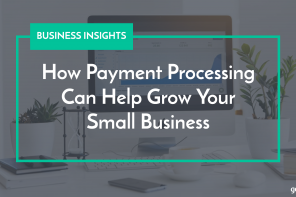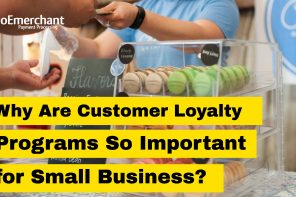It happens every day – for every online company – and in every industry. Customers come to websites, find items they like, and stash those items in a digital shopping cart. Many of these people will carry on to checkout, but many will not. Some get distracted, leaving your page for the next viral cat video or article on philandering politicians. Others just decide before the moment of truth that they’re not as interested in your product as they thought they were. The same thing happens in stores across America, where in-person shoppers pick up items and get buyer’s remorse before they ever pull the trigger. Your success as an online businessperson demands that you convert these events into sales. Here’s some advice on how to make it happen.
1. Create a checkout page that drives sales conversions
The design of your checkout page can determine whether your shopper spends money or abandons the purchase. Good checkout pages have a handful of critical elements. They must include a means by which people can edit their purchases. If a person added a size medium to their cart and instead needs a size small, they shouldn’t have to cancel the purchase. Your checkout page should make this easy and intuitive. You should, as well, have options for quick and express checkouts. There’s no better way to lose a sale than to make people sign up or give unnecessary information when they’re trying to give money to you. You should also include your phone contact information right on the checkout page, ensuring that people don’t have to click away if they need to contact you.
2. Offer Multiple Payment Options
When designing your ecommerce checkout pages, you don’t want anything to come between your customers and a satisfying, rewarding, and ultimately seamless shopping experience. However, if you’re only offering a single payment option (or very few choices), you’re putting unnecessary obstacles between potential customers and your sales.
Credit card payment options are a no-brainer, but today, consumers have more choices than ever before of how to pay for goods online. Mobile payment systems such as Apple Pay and Google Wallet are becoming increasingly popular, particularly among younger demographics.
Offering more payment options minimizes – or eliminates – another potential reason a customer has to abandon their cart and take their business elsewhere. Sure, the more payment choices you provide, the more hassle it is for you as a business owner (and the higher your merchant services fees may be), but you’re giving your customers what they want, and that’s what it’s all about.
3. Avoid coupon code input bars unless it’s critical to your strategy
If you have a company that gives out significant discounts and coupons, then have a coupon code input bar where customers can claim their rewards. If this isn’t a part of your model, then find some other way to allow for discounts. Customers are trained today to search the Internet for coupon codes if they see a place to input the information. When you throw a coupon code input section their way at the end of the purchase, you’ll be encouraging them to hop off of your page to search for those coupons. When this happens, there’s always a chance they won’t wander back to your page.
4. Offer free shipping
Shipping charges are a major obstacle to conversion. Given the maturity and competitiveness of some market actors, such as Amazon, visitors expect free shipping. Moreover, other studies have shown that visitors spend an average of 30% more when there are no delivery charges.
Therefore, to the extent possible, cover shipping expenses or offer other order fulfillment options that give the shopper the impression that delivery will not cost them any money (e.g. delivery to nearest brick-and-mortar outlet, click and collect, etc.).
If you cannot provide free shipping throughout the year, schedule promotional periods during which you will cover delivery costs. Another possibility is to offer free shipping on orders whose total reaches a predefined threshold; this allows you to keep a decent margin and make it easier for shoppers who like your products to go through with their purchase. A final alternative, if you cannot afford to give free shipping, is to offer some kind of incentive that will add value to the transaction and help them swallow the bitter pill of delivery charges. Sample incentives could be a loyalty program, a discount on a future purchase or free samples.
5. Find a way to follow up with customers who abandon their purchase
While some people abandon shopping carts because they decided not to purchase your item, others do it because of a problem with Internet connectivity, because of forgetfulness, or just because they got distracted. Following up with these people could remind them of something they actually intended to purchase. Even if a customer was not planning to purchase the item, you’ll be making contact with them and have the opportunity to sell them again on whatever item they were looking at. It’s one of the best ways to do targeted marketing at customers with a known interest.
Shopping cart abandonment is a major problem for online businesses today. Some estimate that three in every four shopping carts end up abandoned, leaving a veritable wasteland of potential business waiting out there to be claimed. If you can design your website and your customer engagement strategy to minimize shopping cart abandonment, you’ll have an edge on competitors that are just hoping for sales.
6. Do not require visitors to create an account to check out
Many shoppers abandon their carts because they were asked to create an account with the site. Creating an account slows down the sale and puts a barrier at the very beginning of the process. Forcing visitors to create accounts can be a barrier to ordering, as proven by a study from User Interface Engineering which showed that eliminating the compulsory account creation step enabled some e-merchants to boost their conversion rate by 45%.
And yet, creating an account may meet other marketing objectives or requirements; in some cases, it may be indispensable. Fortunately, there are many alternatives. You can, for example, make registration optional, but remind shoppers of the benefits of creating an account (order tracking, invitations to private sales, etc.). This allows you to satisfy as many visitors as possible – those who do not want to sign up, those who do not care either way and those who like the loyalty program concept.
Another option – more insidious but equally effective – is to automatically create an account for the user without presenting it as a step in itself. This entails simply asking for a password when customers enter their contact information (name, e-mail, address, etc.). They will realize that they are creating an account, but will be sufficiently engaged in your order funnel so there is no risk of abandonment, especially as they are not dealing with an entirely distinct stage in the process.
One final possibility is to ask customers to create an account after completing their purchase. At this point, it is easier to prompt visitors to complete this step, especially if you remind them that it enables them to track their order, access the help desk and so on.
7. Offer innovative price matching
Many customers suffer from a sort of anxiety about the online purchasing process. They see an item and want it, but they worry that a better price might be lurking out there somewhere else. Part of converting sales is alleviating the anxiety these shoppers feel. Give them a price match guarantee so they know that even if they stumble across a cheaper sweater tomorrow, you’ll match the price.




